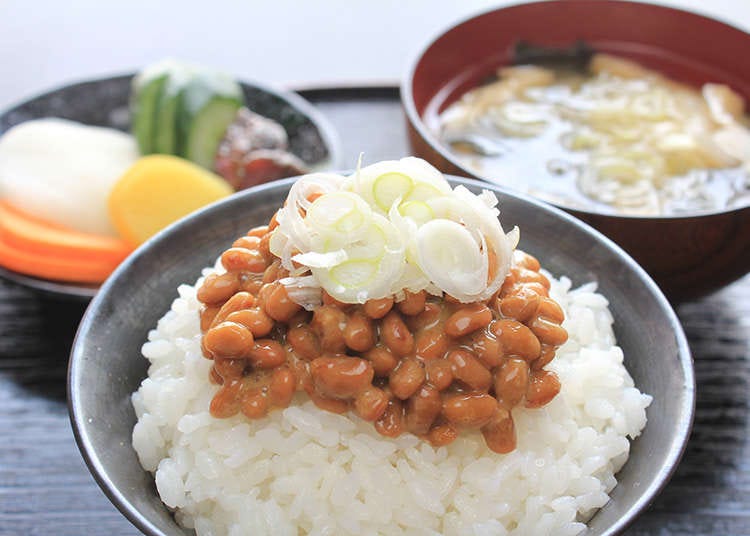
Travelling around Japan, food is one of many pleasures. In Japan, various ingredients are used and the types of food are abundant. What kinds of Japanese dishes and drinks are there?
Basic washoku (Japanese dishes)
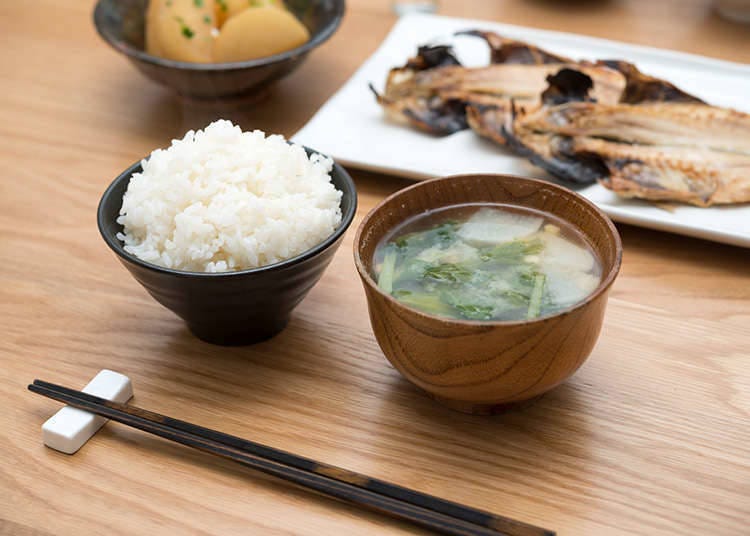
Basic washoku consists of rice, soup, a main dish, a small bowl and pickles, making up one soup and three dishes. Generally you eat them with chopsticks. Ingredients are not processed much and a simple recipe that makes the most of flavors inherent in the ingredients themselves is a characteristic of washoku.
Sushi
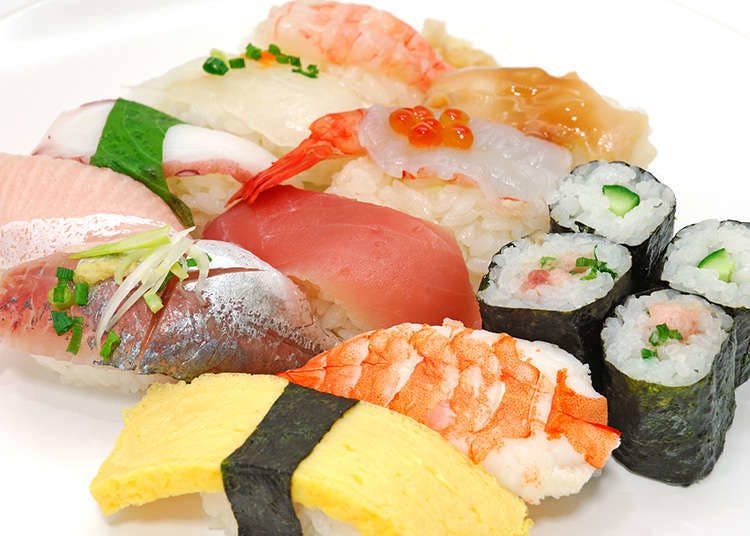
It is sushi that represents Japanese cuisine and that is popular even overseas. Among others, nigirizushi is a representative. Nigirizushi is made by taking a small amount of vinegared rice, placing sushi ingredients cut into rectangles on top of it and squeezing them gently with two fingers.
Tempura
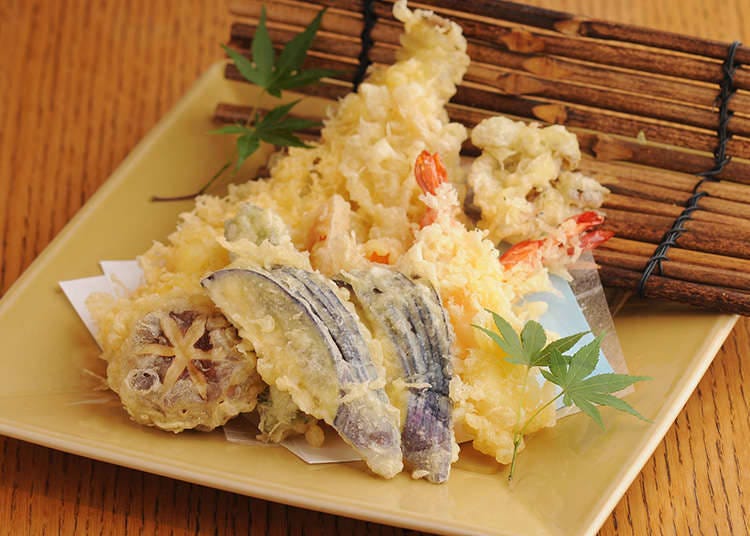
After ingredients such as fish, shellfish and vegetables are prepared, they are coated by a mixture of flour, eggs and water and then fried. Ingredients often used are white meat fish like tiger prawns, congers, goby and sillagos, and vegetables like eggplant, lotus root, mushrooms and edible wild plants. "Kakiage," which combines several chopped ingredients, is also popular.
Eel

In Japan, if you have eel, it usually means unaju, a box filled with rice topped with kabayaki eel. In most cases, eels are cooked as kabayaki. Kabayaki is where eels are opened, filleted and skewered, then grilled with no seasoning and finally charcoal-grilled while being coated with a salty-sweet sauce made of soy sauce, mirin (sweet sake), sake and sugar.
Soba and udon (noodles)
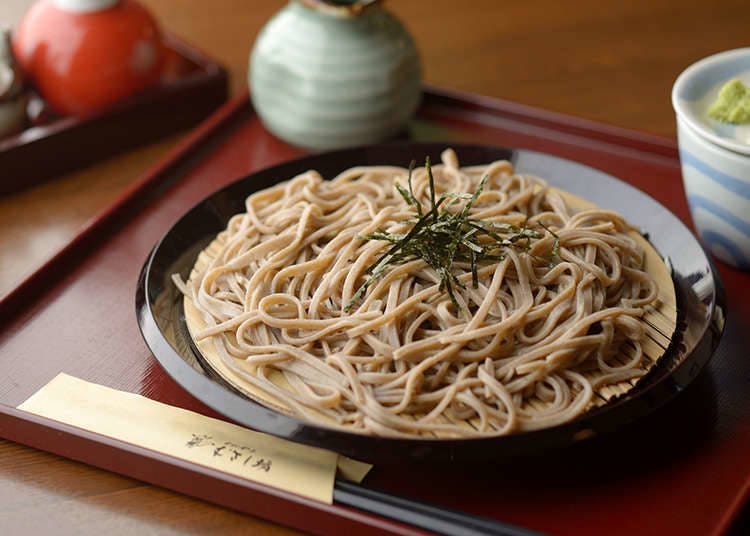
Soba and udon are noodle dishes in Japan. Soba is made from buckwheat while udon is made from wheat, thereby they have different flavors and textures from each other.
Japanese sake
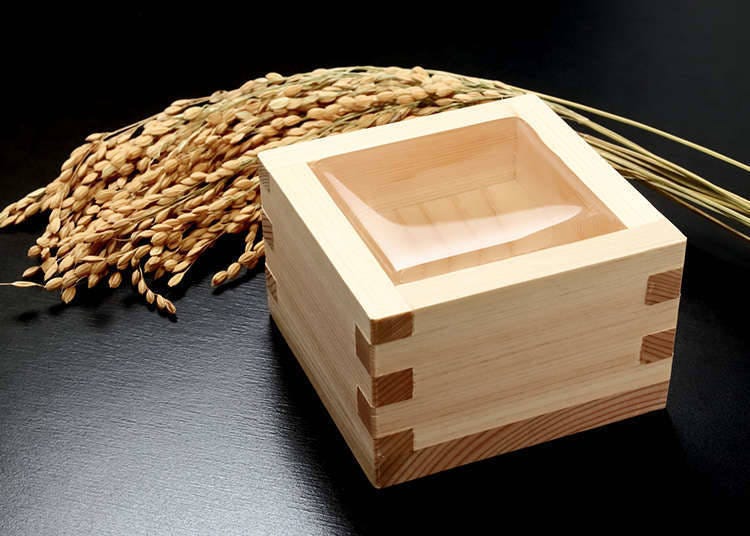
Japanese sake is brewed alcohol made from rice, koji (rice mold) and water. Typical Japanese sake has about 15% abv. and has a sweetness derived from rice. You can have sake cold, called reishu and also warm, called atsukan or nurukan depending on its temperature. It is characteristic of sake that you can have it at various temperatures.
- Category
*Prices and options mentioned are subject to change.
*Unless stated otherwise, all prices include tax.
Popular Tours & Activitiess
Recommended places for you
-

New Seibu L00 Series Launching in 2026! What to See Along the Tokyo-Area Golden Route
by: Guest Contributor
-

Tokyo City Pass Upgrade: Harry Potter Studio Tour & Top Sights up to 85% Off
by: Guest Contributor
-

Enjoy Japan's Gorgeous Winter Lights! Ride the Romancecar to Shonan no Hoseki Illumination
by: Guest Contributor
-

Keisei × Keikyu 16-Temple Goshuin Tour: Discover Deeper Tokyo & Yokohama
by: Guest Contributor
-

The Best Japanese Food Representing 2025! 'Dish of the Year®' Annual Award Results Announced
-

Get Ready to Catch 'Em All! First Ever Permanent Outdoor Pokémon Park Opening Near Tokyo!
-

Authentic and Unique: Why Japanese Whisky is an International Success
-

Noboribetsu Onsen: 5 Best Things to Do in Japan's Famous Hot Springs Town!
-

10 Popular Japanese Vegetables And The Unique Ways They're Used!
-

Easy Oyakodon Recipe: How to Make Japan’s Definitive Donburi Dish!
-

We Ordered Food at This Susukino Restaurant in Sapporo, But We Weren't Expecting What Happened Next!
-

Otaru Travel Guide: Inside Hokkaido's Leading Destination (Sightseeing, Food, and Shopping Tips)
- #best sushi japan
- #what to do in odaiba
- #what to bring to japan
- #new years in tokyo
- #best ramen japan
- #what to buy in ameyoko
- #japanese nail trends
- #things to do japan
- #onsen tattoo friendly tokyo
- #daiso
- #best coffee japan
- #best japanese soft drinks
- #best yakiniku japan
- #japanese fashion culture
- #japanese convenience store snacks


















